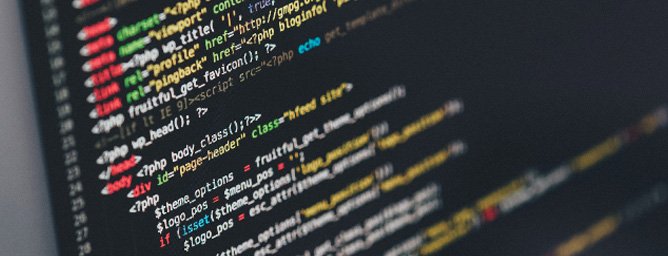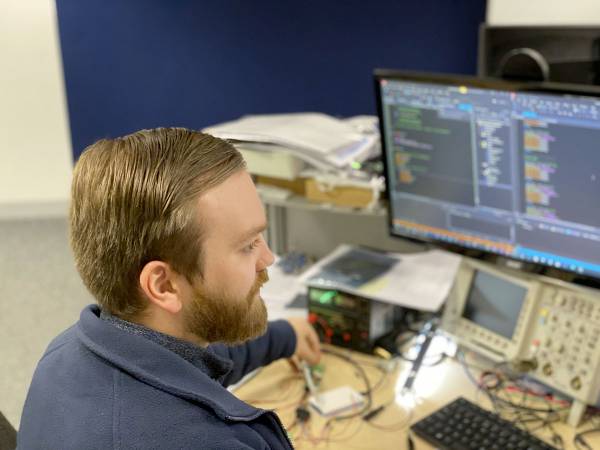
 There is a lot of confusion about the difference between hardware, firmware and software. In this blog post, we will clear up that confusion and help you understand the distinctions between these three important terms.
There is a lot of confusion about the difference between hardware, firmware and software. In this blog post, we will clear up that confusion and help you understand the distinctions between these three important terms.
At the simplest level here is a definition of each:
- Hardware refers to the physical components of a system, such as the motherboard, processor, memory, hard drive, etc.
- Firmware is stored in read-only memory (ROM) and is responsible for booting the system and low-level tasks.
- Software is stored in random access memory (RAM) and can be executed by the processor.
Let’s look at each one in more detail and explore some examples.
What is Hardware?
In the most basic sense, hardware refers to the physical components of a computer system. This includes everything from the central processing unit (CPU) to the memory chips to the hard drive. Basically, if you can touch it or see it, it’s considered hardware.
One important thing to note about hardware is that it is not static. Unlike software, which is stored electronically and only needs to be accessed by the CPU, hardware can degrade over time due to normal wear and tear. This means that it’s important to regularly check your computer’s hardware for any signs of damage or wear. If you notice anything abnormal, be sure to take your computer to a qualified technician for further diagnosis.
Examples of hardware
There are many different types of hardware. Below are some examples of common hardware components:
- CPU: The brain of the computer; responsible for processing all instructions
- Hard Drive: A type of long-term storage; used to store data permanently
- Graphics Card: Generates images for the monitor
- Monitor: Displays images and text generated by the graphics card
- Keyboard: Allows users to input text instructions
- Mouse: Allows users to input graphical instructions
- Printers: Produce physical copies of documents
- Scanners : Digitise physical documents into digital format
How hardware differs from firmware and software
The main way that hardware differs from firmware and software is that the former is physical whereas the latter two are both stored electronically.
What is Firmware?

Firmware is a type of software that is embedded into a hardware device. It is responsible for controlling how the device interacts with other devices and software. Firmware is typically programmed by the manufacturers of hardware components straight from the factory and it is designed to work with specific hardware components.
The term firmware comes from FIRM softWARE. It consists of software instructions located in non-volatile storage that can hold its content without power. It is found on computer motherboards where it holds hardware settings and boot data. It is also found on many other types of consumer electronics devices to hold the operating system and applications. All devices and hardware have firmware, including smartphones, tablets, routers and smart TVs.
Examples of firmware
One example of firmware is the BIOS (Basic Input/Output System) found in computers. The BIOS controls how the computer starts up and interacts with other devices and software. Another example of firmware is found in smartphones. The firmware in a smartphone holds the operating system and applications and so controls how the phone operates and runs applications.
How firmware differs from software
Although both firmware and software are types of code that control how electronic devices behave, there are some key differences between them. Here are some of the main ways in which firmware differs from software:
- Unlike software, firmware is stored on read-only memory (ROM) chips.
- Firmware is specific to a particular hardware device, whereas software can run on different types of computer or device.
- Firmware is usually created by the company that manufactures the hardware device whereas software can be written by anyone who has the skills to do so.
What is Software?

Software refers to the programmes that enable a computer or electronic device to perform specific tasks. Software is a set of instructions that tells a computer what to do.
It can be as simple as a single line of code that tells the computer to print something on the screen. Or it can be much more complex, such as an operating system like Windows or macOS that controls everything on your computer. Software is a set of code that tells the hardware what to do. It’s what allows you to surf the web, stream videos, type documents and more.
Software is important because it brings functionality to our electronic devices. Without software, hardware is pretty much useless.
Some software is designed to perform a specific task, such as a word processor for writing documents or a web browser for surfing the internet. Other software is designed to be more general-purpose, such as an operating system that provides a platform for running other software.
Operating systems are a particularly important type of software because they provide the foundation upon which other programmes can run. For example, without an operating system like Windows or macOS, you would not be able to use any of the other programmes on your computer.
Examples of software
Software includes both the programmes that we use on our computers and the underlying code that makes those programmes work. The most popular examples of software are the operating systems that power our computers, such as Windows, macOS, Linux, etc. Other examples of software include the apps and programmes that we use on our computers, such as word processors, web browsers, media players, and so on.
Different types of software include:
- Operating system (OS) software: This type of software manages all of the hardware resources associated with your computer. For example, when you want to print a document, the OS will send that request to the printer connected to your computer.
- Application software: This type of software allows users to perform specific tasks. For example, Microsoft Word is application software that allows you to edit text, create layouts and more.
- System software: This type of software coordinates actions across hardware devices and provides common services for application software. For example, drivers are system-level software that allow application level code to interact with specific hardware devices.
In conclusion, hardware refers to the physical components of a computer set up, while firmware and software are both stored electronically. Firmware is stored on read-only memory (ROM) chips and controls how a particular hardware device behaves. Software, on the other hand, refers to all the programmes and applications that enable a computer or electronic device to perform specific tasks. All are equally important and work together to make our computers and other electronic devices so useful.
DSL is a ‘one-stop-shop’ when it comes to electronic design, as our multi-disciplined engineers are skilled in hardware, firmware and software, i.e. all the things needed to develop successful computing-led solutions in the modern world. Likewise, our Panel PC range comes with exceptional support.
Find out more about how we use hardware, firmware and software to create the solution that best meets our customers’ needs or get in touch with us today to discuss your own requirements.

